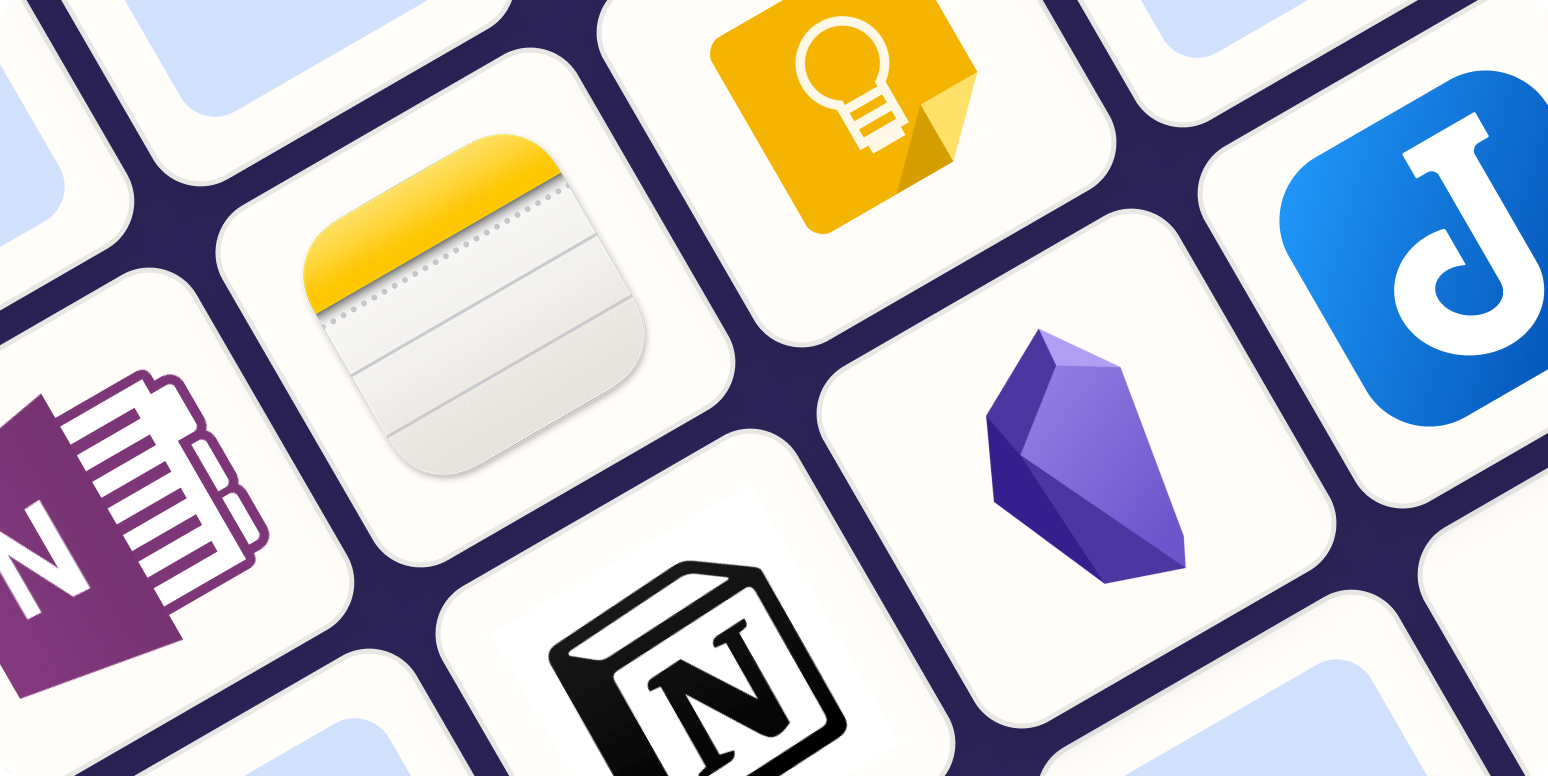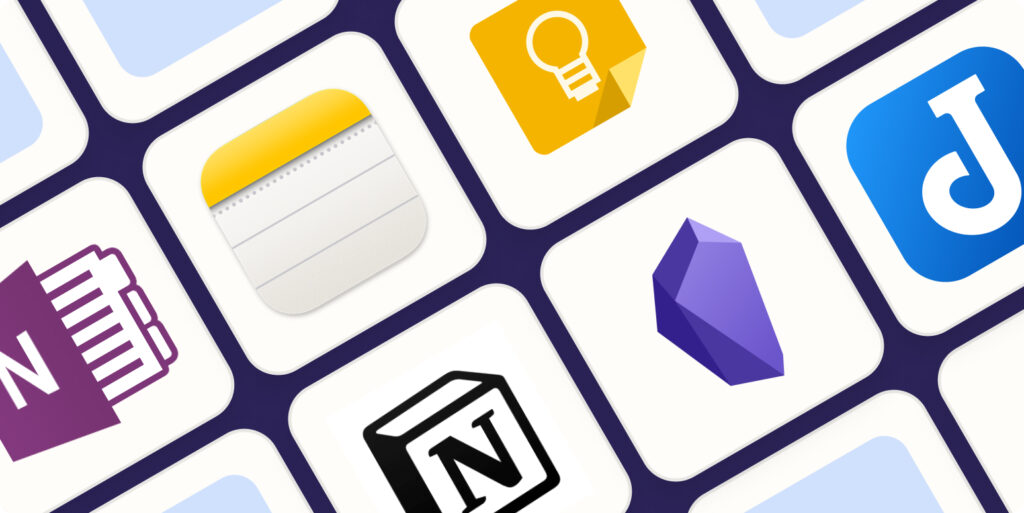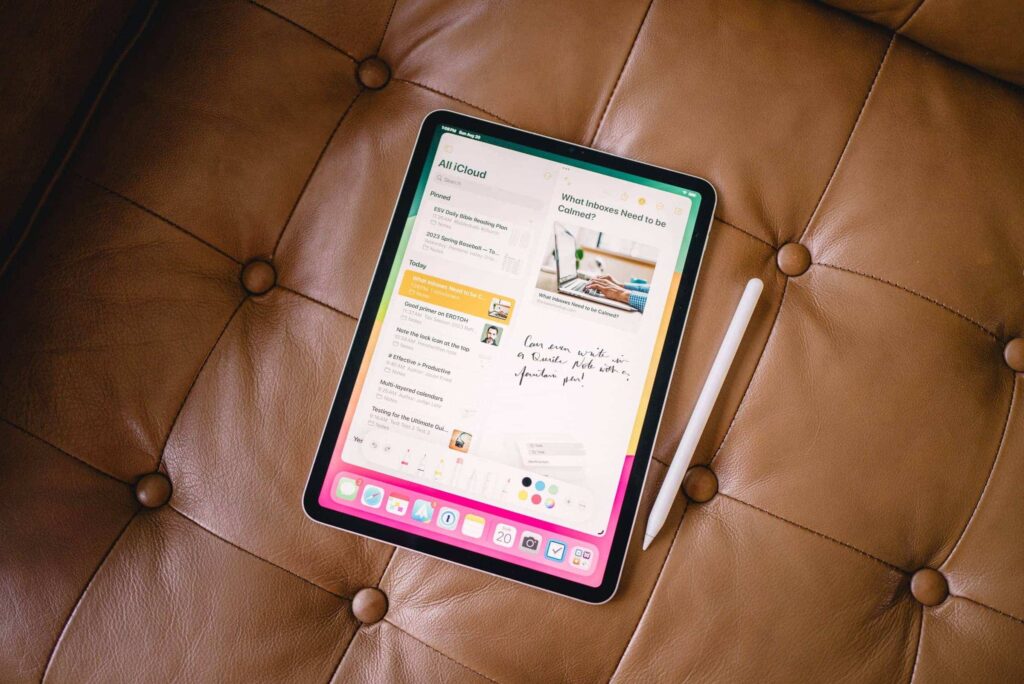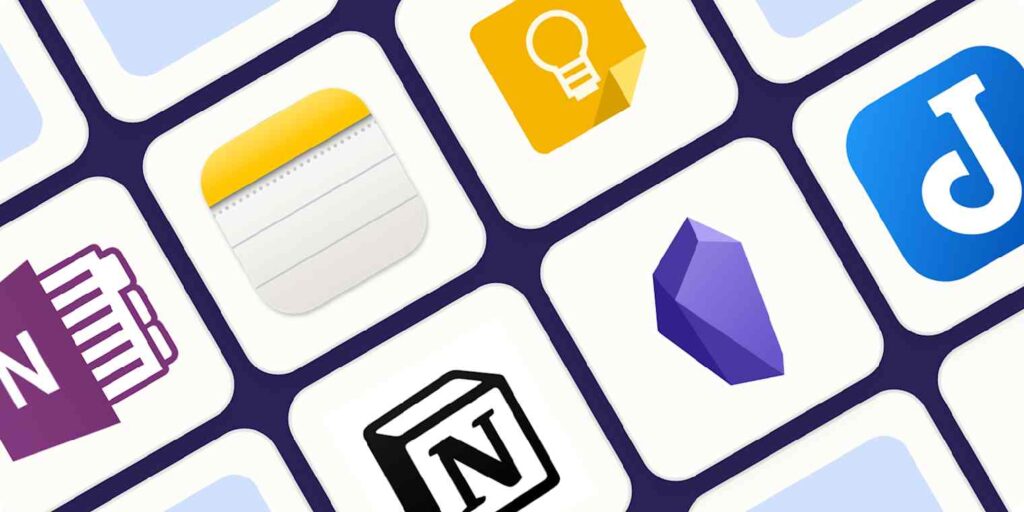Ever feel like your brain is a browser with too many tabs open? Ideas, tasks, meeting notes, project details, brilliant insights – they all clamor for attention, often getting lost in the shuffle. This digital deluge can leave even the most organized among us feeling overwhelmed, hindering our ability to concentrate and truly be productive. What if there was a way to capture every thought, streamline your workflow, and ensure no great idea ever slips through the cracks again? As a content strategist with over a decade of experience helping people navigate complex tech, I’ve seen firsthand how the right tools can transform daily struggles into triumphs. This comprehensive guide introduces The 5 Best Note-Taking Apps for Ultimate Productivity, designed to serve as your external brain, helping you achieve unparalleled clarity and efficiency.
In today’s fast-paced world, an effective note-taking system is no longer a luxury; it’s a necessity. It’s the cornerstone of effective time management, a catalyst for deep focus, and the secret weapon for sustained goal setting. This article will delve into specific features, real-world benefits, and practical applications of each app, ensuring you find your perfect productivity partner. We’ll explore how these tools not only capture information but also help you process, organize, and retrieve it effortlessly, empowering you to reclaim your attention and amplify your output.
Why Your Current Note-Taking Might Be Holding You Back
Before we dive into The 5 Best Note-Taking Apps for Ultimate Productivity, let’s acknowledge a common truth: many of us are still using outdated or inefficient methods. Perhaps you’re juggling multiple physical notebooks, relying solely on sticky notes, or scattering digital files across various platforms. This fragmented approach leads to:
- Information Overload: You capture data, but can’t find it when you need it.
- Lost Ideas: Brilliant insights disappear because there’s no immediate, reliable capture system.
- Wasted Time: Searching for specific details becomes a significant time sink.
- Lack of Cohesion: Disconnected notes make it hard to see the big picture or connect related thoughts.
- Reduced Focus: The mental effort to remember where things are stored detracts from actual work.
The good news? The solution is within reach. By adopting one of The 5 Best Note-Taking Apps for Ultimate Productivity, you can transform chaos into a structured, searchable, and infinitely more useful knowledge base. These digital tools are designed to not only store your thoughts but to help you actively engage with them, foster deeper learning, and significantly boost your overall workflow.
1. Notion: Your All-in-One Workspace for Ultimate Productivity
Notion isn’t just a note-taking app; it’s a versatile workspace that can adapt to almost any need, making it a powerful contender among The 5 Best Note-Taking Apps for Ultimate Productivity. Imagine a digital environment where you can take notes, manage projects, build databases, track habits, and even create your own personal wiki – all connected and customizable. This flexibility is what truly sets Notion apart for professionals, teams, and ambitious students looking to centralize their entire digital life.
Key Features:
- Blocks-Based Editor: Everything in Notion is a block – text, images, checklists, code snippets, tables, and more. This modular approach allows for incredible flexibility in structuring your notes and pages.
- Databases: Create powerful databases for tasks, projects, CRM, content calendars, and more, with multiple views (table, board, calendar, gallery, list). This is where Notion truly shines for complex workflow management.
- Templates: A vast library of community-created and official templates jumpstarts your setup for various use cases, from meeting notes to habit trackers.
- Interlinked Pages: Easily link pages and blocks, creating a dense web of interconnected information, perfect for knowledge management and deep dives.
- Collaboration Tools: Share pages, assign tasks, and comment in real-time, making it excellent for team collaboration and project coordination.
Pros:
- Incredibly Flexible: Tailor it precisely to your needs, whether for personal organization, academic study, or professional project management.
- Powerful Databases: Unmatched ability to organize and visualize information.
- Centralized Workspace: Consolidates multiple tools into one, reducing context switching and improving focus.
- Strong Community Support: Abundant tutorials, templates, and advice available online.
- Excellent for Project Management: Supports detailed task tracking, progress monitoring, and resource allocation.
Cons:
- Steep Learning Curve: Its power comes with complexity; new users might feel overwhelmed initially.
- Can Be Slower: Compared to simpler note-takers, loading times can sometimes be longer.
- Offline Access Limitations: Full functionality often requires an internet connection.
Best For:
Power users, teams, project managers, students juggling multiple courses, and anyone who wants a fully customizable digital workspace that goes beyond basic note-taking to manage their entire workflow.
2. Evernote: The Classic Digital Brain for Information Capture
Evernote has long been a titan in the note-taking world, and for good reason. It excels at being a truly comprehensive digital capture tool, solidifying its place among The 5 Best Note-Taking Apps for Ultimate Productivity. Think of it as your external brain, ready to store every piece of information you encounter, from quick thoughts to entire web pages, and make it instantly searchable. Its enduring appeal lies in its robust capture capabilities and powerful search functionality.
Key Features:
- Versatile Capture: Clip web pages (full page, simplified, or screenshot), snap photos, record audio, attach documents, and type notes.
- Powerful Search: Find anything you’ve ever stored, including text within images (thanks to OCR), PDFs, and handwritten notes. This is a game-changer for information recall.
- Notebooks & Tags: Organize notes into notebooks and use tags for cross-referencing, offering multiple layers of categorization.
- Cross-Device Sync: Access your notes seamlessly across all your devices, ensuring your information is always at your fingertips.
- Reminders: Turn notes into actionable items with due dates, aiding in effective time management.
Pros:
- Unrivaled Search Functionality: Never lose a note again, no matter how obscure.
- Excellent Web Clipper: Perfect for researchers, students, and content curators.
- Diverse Note Types: Handles text, images, audio, and documents with ease.
- Reliable Cloud Sync: Your data is always available and backed up.
- Supports Collaboration: Share notebooks or individual notes for teamwork.
Cons:
- Pricing Structure: The free tier has significant limitations (2 devices, 60MB/month upload). Premium can be costly for some.
- Interface Can Feel Dated: While functional, it might not feel as sleek or modern as newer alternatives.
- Limited Customization: Not as flexible for complex project management as Notion.
Best For:
Researchers, journalists, students, professionals needing to capture and organize a vast array of information, and anyone who values robust search and reliable syncing.
3. Microsoft OneNote: The Digital Binder for Seamless Integration
If you’re already deeply embedded in the Microsoft ecosystem, OneNote might just be your ultimate productivity ally and a strong contender within The 5 Best Note-Taking Apps for Ultimate Productivity. It’s designed to mimic the familiar experience of a physical binder, but with all the advantages of digital flexibility. OneNote shines with its free-form canvas, allowing you to place text, images, drawings, and files anywhere on a page, making it incredibly intuitive for visual thinkers and those who prefer a less rigid structure.
Key Features:
- Free-Form Canvas: Unlike traditional word processors, OneNote pages are infinite. Drag and drop elements anywhere, just like writing on a whiteboard.
- Section & Page Hierarchy: Organize notes into notebooks, sections, and pages, providing a clear and familiar structure.
- Rich Media Support: Embed images, videos, audio recordings, and files directly into your notes. Perfect for detailed meeting notes or study materials.
- Handwriting & Drawing: Excellent support for stylus input, making it ideal for tablets and 2-in-1 devices, especially for sketching ideas or annotating PDFs.
- Seamless Microsoft Integration: Works perfectly with Word, Excel, Outlook, and other Microsoft Office apps, enhancing your overall workflow.
Pros:
- Completely Free (with a Microsoft Account): Access to powerful features without a subscription.
- Deep Office Integration: A natural fit for users of Microsoft products.
- Infinite Canvas for Creativity: Great for brainstorming, mind mapping, and visual note-taking.
- Excellent for Stylus Users: One of the best for digital ink and handwriting.
- Strong Search Capabilities: Finds text within images and handwritten notes.
Cons:
- Can Be Overwhelming: The lack of structure can sometimes lead to disorganized pages if not managed carefully.
- Cross-Platform Inconsistencies: While available on most platforms, the user experience can vary between them.
- Sharing Can Be Less Intuitive: While possible, collaboration features aren’t as polished as Notion’s.
Best For:
Students, educators, professionals within the Microsoft ecosystem, visual thinkers, and anyone who prefers a free-form, digital notebook experience with strong drawing and annotation capabilities.
4. Apple Notes: The Unsung Hero for Apple Ecosystem Enthusiasts
For those exclusively in the Apple universe, Apple Notes has evolved from a simple text editor into a surprisingly powerful and integrated tool, earning its spot among The 5 Best Note-Taking Apps for Ultimate Productivity. It’s often overlooked in favor of flashier apps, but its seamless integration across iPhone, iPad, and Mac, coupled with a growing feature set, makes it incredibly efficient for quick captures and organized personal notes. It prioritizes speed and simplicity, ensuring minimal friction when inspiration strikes.
Key Features:
- Seamless Apple Ecosystem Integration: Instantly syncs across all your Apple devices, often leveraging Continuity features like Handoff.
- Quick Notes (iPadOS/macOS): Instantly pull up a note from anywhere on your screen, perfect for capturing fleeting thoughts without breaking your focus.
- Tags & Smart Folders: Organize notes with hashtags and create smart folders that automatically group notes based on specific criteria (e.g., #work, #projectX).
- Rich Media & Attachments: Add photos, videos, scanned documents, drawings, and even PDFs directly into your notes.
- Strong Security: Lock individual notes with a password, Face ID, or Touch ID for sensitive information.
Pros:
- Effortless Integration: Native to Apple devices, offering the smoothest user experience for Mac, iPhone, and iPad users.
- Free and Built-in: No cost, no downloads, just works out of the box.
- Speed and Simplicity: Incredibly fast for capturing ideas, promoting consistent note-taking.
- Robust Search: Quickly find notes based on keywords, tags, or even text within images.
- Collaboration Features: Share notes and collaborate in real-time with other Apple Notes users.
Cons:
- Apple-Only: Excludes users on Windows or Android platforms.
- Limited Advanced Features: Lacks the database power of Notion or the web clipping prowess of Evernote.
- Basic Organization: While tags help, it’s not as robust for complex hierarchical organization.
Best For:
Dedicated Apple users who need a fast, reliable, and secure note-taking solution that integrates perfectly into their existing digital life for personal use, quick captures, and basic organization.
5. Obsidian: The Knowledge Weaver for Interconnected Thoughts
Obsidian represents a different philosophy for note-taking, one that focuses on building a personal knowledge base through interconnected notes, making it a unique entry in The 5 Best Note-Taking Apps for Ultimate Productivity. Unlike cloud-first apps, Obsidian stores your notes as plain Markdown files on your local drive, giving you full control and ensuring future-proof access. Its strength lies in its ability to show you the relationships between your ideas, fostering deeper understanding and creative breakthroughs.
Key Features:
- Markdown-Based: Notes are written in Markdown, ensuring they are plain text, portable, and easily editable by any text editor.
- Local Storage: Your notes are stored as a “vault” on your own computer, offering maximum privacy and ownership.
- Bi-directional Linking: Link notes to each other using
[[wikilinks]]. See both notes that link to the current note (backlinks) and notes the current note links to. This is vital for building a connected web of knowledge. - Graph View: Visualize the connections between your notes as an interactive graph, helping you discover new relationships and insights.
- Extensive Plugin Ecosystem: A thriving community creates plugins for everything from task management to daily notes, LaTeX support, and more, allowing immense customization.
Pros:
- Future-Proof Data Ownership: Your notes are plain text files, accessible forever, independent of any company or service.
- Powerful Knowledge Graph: Fosters deep thinking and discovery of connections between ideas.
- Highly Customizable: Tailor your experience with themes, plugins, and CSS snippets.
- Privacy-Focused: All data is local by default.
- Excellent for Deep Work: Promotes a focused approach to knowledge management and content creation.
Cons:
- Learning Curve: Concepts like bi-directional linking and Markdown might be new for some users.
- No Native Cloud Sync: Requires third-party solutions (like Dropbox, iCloud, Git) for syncing across devices, or a paid Obsidian Sync subscription.
- Not Ideal for Quick Capture: More suited for structured thought and building a knowledge base rather than rapid, fleeting notes.
Best For:
Researchers, writers, academics, developers, and anyone who wants to build a lasting, interconnected personal knowledge base, prioritize data ownership, and enjoys customizing their tools for a highly optimized workflow.
Beyond the App: Choosing Your Perfect Productivity Partner
Selecting from The 5 Best Note-Taking Apps for Ultimate Productivity isn’t a one-size-fits-all decision. It’s about finding the tool that best aligns with your specific needs, habits, and existing digital ecosystem. Consider these factors before making your choice:
- Your Primary Use Case: Are you mostly capturing quick thoughts, managing complex projects, studying for exams, or building a knowledge base?
- Your Ecosystem: Are you an Apple-only user, deep in Microsoft Office, or platform-agnostic? Integration matters for seamless workflow.
- Learning Curve Tolerance: Are you willing to invest time in learning a powerful, complex tool (like Notion or Obsidian) or do you prefer something immediately intuitive (like Apple Notes)?
- Budget: Are you looking for free options, or are you willing to pay for premium features and support?
- Collaboration Needs: Do you need to share notes and work with others in real-time?
- Offline Access: Is it crucial to access and edit notes without an internet connection?
- Data Ownership & Privacy: Do you prefer local storage or are you comfortable with cloud-based solutions?
“The strongest memory is not as strong as the weakest ink.” – Confucius. In our digital age, this means the most brilliant idea is useless if it’s not captured and made actionable.
How to Get Started with a New Note-Taking App in 3 Simple Steps
Once you’ve chosen your champion from The 5 Best Note-Taking Apps for Ultimate Productivity, here’s how to hit the ground running and immediately enhance your time management and focus:
- Start Small, Stay Consistent: Don’t try to migrate your entire life on day one. Begin by using your chosen app for one specific purpose: your daily to-do list, meeting notes, or capturing new ideas. Make it a habit to open the app and use it at least once a day. This builds muscle memory and integrates it into your workflow.
- Define Your Structure (Loosely): Before you accumulate too many notes, think about a basic organizational structure. Will you use notebooks, folders, tags, or a combination? For example, create a “Work,” “Personal,” and “Learning” section. Don’t overthink it; you can always refine it later. The goal is to make retrieval easy, boosting your information recall.
- Integrate One Key Routine: Pick one routine where you consistently take notes, and commit to using your new app for it. This could be planning your day, reviewing articles, or brainstorming for a project. For instance, if you usually jot down “morning thoughts” in a physical notebook, switch to your digital app. This immediate application makes the app a valuable part of your daily goal setting and routine.
Integrating Your Note-Taking App into Your Daily Workflow for Ultimate Productivity
Adopting one of The 5 Best Note-Taking Apps for Ultimate Productivity is just the first step. The real magic happens when you weave it seamlessly into your daily life. This isn’t just about storing information; it’s about actively using it to improve your time management, enhance your focus, and drive your goal setting.
1. Centralize Your Task Management:
Use your note-taking app to create and track your daily to-dos, project tasks, and long-term goals. Many of these apps allow you to create checklists, set reminders, and link tasks to relevant notes. This ensures all your actionable items are in one accessible place, reducing mental load and improving your ability to focus on what matters.
2. Streamline Meeting Notes and Follow-ups:
During meetings, use your app to capture discussions, decisions, and action items. Link these notes to relevant projects or people. Immediately after the meeting, review your notes to identify follow-up tasks and assign them. This practice not only improves collaboration but also ensures accountability and prevents important details from being forgotten.
3. Build a Personal Knowledge Base:
Whenever you learn something new – from a book, an article, a podcast, or a conversation – capture it. Organize these snippets using tags or links. Over time, you’ll build a powerful, searchable personal library of insights. This acts as an external brain, making information recall effortless and supporting continuous learning.
4. Optimize Your Brainstorming and Idea Generation:
When new ideas strike, no matter how small, quickly capture them in your app. Utilize features like drawing, audio notes, or web clipping to capture ideas in their most natural form. Later, you can revisit these raw ideas, expand on them, and connect them to other projects or goals. This ensures no brilliant thought goes unrecorded.
5. Enhance Collaboration and Sharing:
For team projects or shared responsibilities, leverage the collaboration features of your chosen app. Share relevant notes, documents, or entire workspaces. This centralizes communication and resources, minimizing miscommunication and ensuring everyone is on the same page, leading to a more efficient and productive team workflow.
By consistently applying these strategies, your chosen note-taking app will transform from a simple digital scratchpad into an indispensable tool that actively supports your ultimate productivity goals.
Conclusion: Unlock Your Potential with the Right Digital Brain
In a world brimming with information, having a reliable system to capture, organize, and retrieve your thoughts is paramount to achieving ultimate productivity. We’ve explored The 5 Best Note-Taking Apps for Ultimate Productivity, each offering a unique blend of features designed to tackle various challenges – from Notion’s all-encompassing workspace and Evernote’s powerful capture, to OneNote’s flexible canvas, Apple Notes’ seamless integration, and Obsidian’s deep knowledge weaving capabilities.
The key takeaway? There’s no single “best” app for everyone. The best one for you is the one you’ll actually use consistently, the one that seamlessly integrates into your unique workflow and helps you maintain focus and achieve your goal setting. Take the plunge, experiment with a few, and commit to making digital note-taking a cornerstone of your daily routine. By doing so, you’ll not only declutter your mind but also unlock new levels of efficiency, creativity, and ultimate productivity. Your future, more organized, and more focused self will thank you.
Frequently Asked Questions (FAQ)
Q1: Is a paid note-taking app truly necessary for ultimate productivity?
A: Not always, but it depends on your needs. Apps like Apple Notes and OneNote offer robust free tiers that are more than sufficient for many users. However, if you require advanced features like extensive storage, deep collaboration, powerful database capabilities (Notion), or heavy web clipping (Evernote), a paid subscription can be a worthwhile investment to truly unlock ultimate productivity.
Q2: How do I choose the “best” note-taking app for me out of these 5 options?
A: Consider your primary needs:
- Comprehensive Project Management: Notion
- Information Hoarding & Search: Evernote
- Freeform Canvas & Microsoft Integration: OneNote
- Seamless Apple Ecosystem Experience: Apple Notes
- Building a Connected Knowledge Base (Privacy-focused): Obsidian
Think about your current workflow, preferred device, and whether you need collaboration or prefer deep personal focus.
Q3: Can I use multiple note-taking apps simultaneously?
A: While you can, it’s generally advisable to centralize your primary note-taking efforts in one main app to avoid fragmentation and maintain a clear workflow. However, some people successfully use one app for quick capture (e.g., Apple Notes) and another for more structured knowledge management (e.g., Obsidian or Notion). Just ensure you have a clear purpose for each to prevent confusion and maintain time management.
Q4: What about security and privacy for my notes?
A: This is a crucial concern.
- Obsidian: Offers the highest level of privacy as notes are stored locally on your device (you control your data).
- Apple Notes & OneNote: Integrate with Apple and Microsoft’s robust cloud security protocols, respectively. You can also password-protect individual notes.
- Evernote & Notion: Both employ industry-standard encryption and security measures. Always use strong, unique passwords and consider two-factor authentication for any cloud-based service.
Q5: How often should I review my notes to maximize their value?
A: Regular review is key to turning notes into knowledge. Aim for a quick review of daily notes at the end of each day to process tasks and insights. Weekly, spend 15-30 minutes reviewing key project notes or learning materials to reinforce understanding and connect ideas. This practice significantly improves information recall, aids in goal setting, and keeps your knowledge base active and useful, directly contributing to your ultimate productivity.
See more: The 5 Best Note-Taking Apps for Ultimate Productivity.
Discover: AskByteWise.



